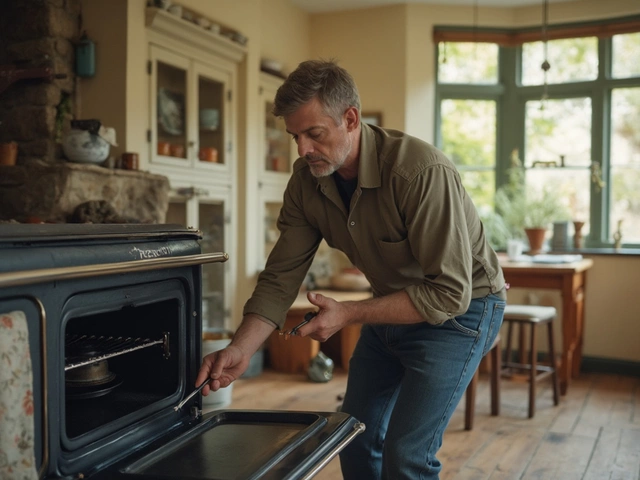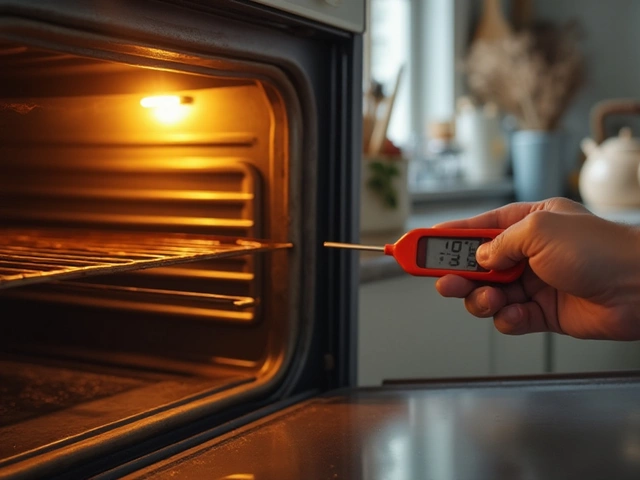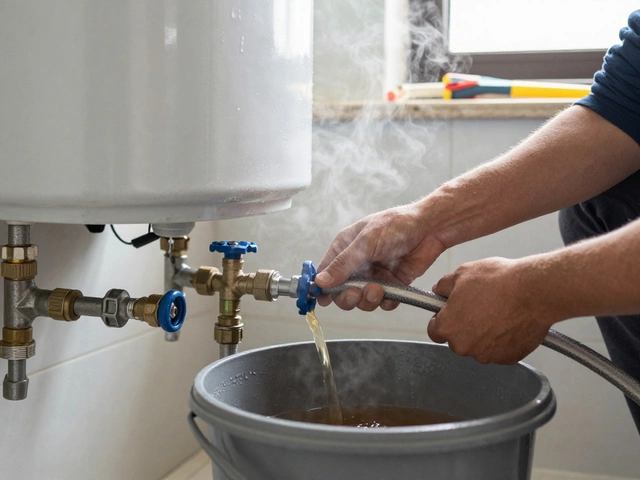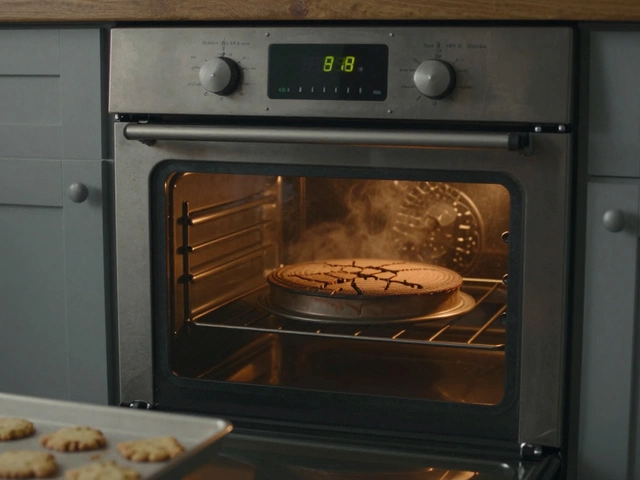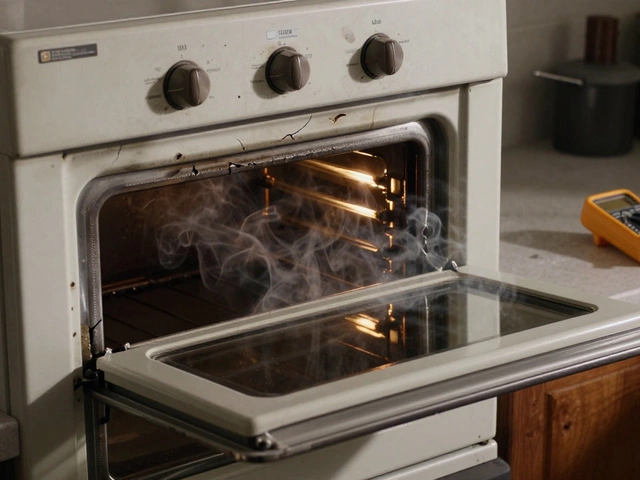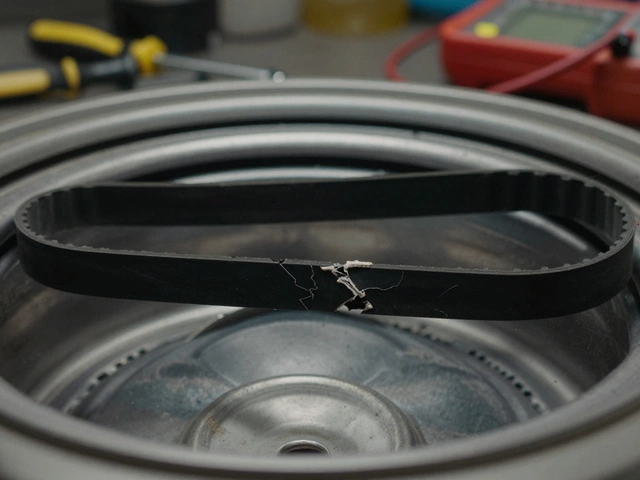Encountering a problem with your oven can be both frustrating and inconvenient, especially when you're set on cooking a homemade meal. Fixing a broken oven can vary in cost based on a variety of factors, leaving many homeowners unsure where to start or what to expect. Should you go the DIY route, or is calling a professional the smarter move?
This article aims to demystify the typical expenses related to oven repair, offering a closer look at common issues like faulty heating elements or malfunctioning thermostats. We'll explore the balance between repairing and replacing, and provide handy tips to prevent hefty repair bills in the future. So, whether it's your trusty old oven or a modern one that needs attention, let us guide you through making an informed decision without breaking the bank.
- Common Oven Issues and Costs
- DIY Repairs vs Professional Services
- When to Repair vs Replace
- Tips to Save Money on Oven Repairs
Common Oven Issues and Costs
Owning an oven is a staple in many kitchens, but just like any appliance, it can encounter issues over time. Knowing the usual suspects and the cost involved can save you a headache when your culinary plans go awry. One frequent problem is a faulty heating element. You might notice your dishes aren't cooked evenly. Replacing the coil for an electric oven, or the igniter in a gas oven, can cost around $100 to $350, depending on the model and whether you opt for a professional service. If you're handy, tackling this yourself with a modestly priced part might just do the trick.
Another common issue is the oven's temperature not aligning with the settings, which points to a thermostat malfunction. Inaccuracy in temperature regulation can lead to undercooked food or charred disasters, spoiling meal prep. Replacing the thermostat can set you back between $200 and $300. Whether you choose DIY or professional help depends on your comfort level with tinkering with wires. An issue like broken oven doors is more often a mechanical problem, potentially involving springs or hinges that require replacement. Depending on the extent, this task might cost anywhere from $50 to $150.
“When your oven starts behaving unexpectedly, a quick check with a multimeter can sometimes point you to the likely culprit, saving both time and money,” advises home repair expert David Stone, director at Home Appliance Association.
“Ensuring basic maintenance routines can prevent half of these issues in the first place, especially checking door seals for cracks or dirt, and cleaning oven racks promote longer appliance life.”
A lesser-known problem that can drive repair costs involves electrical issues like blown fuses or tripped circuits. This is generally more complex and, consequently, expensive to fix, often needing a technician's intervention. Expect a range from $100 to $400, which includes the technician's fees. Recognizing the signs early, such as the oven not turning on at all or sporadic power loss during operation, could prevent larger problems down the line.
Proactive maintenance plays a crucial role in avoiding these surprises. Knowing the typical lifespan of parts like heating elements (around 3-5 years) or thermostats helps plan ahead, perhaps scheduling a yearly check-up by a professional can be a good investment. It's important for homeowners to reconcile these figures with the overall age and condition of the appliance to decide if a repair is worthwhile or if it’s time to consider replacement options. An added layer of wisdom can be using this cost knowledge while shopping for warranty options if purchasing a new oven.

DIY Repairs vs Professional Services
Deciding whether to tackle an oven repair yourself or to call in a professional can be quite the conundrum for many homeowners. On one hand, the allure of saving money through DIY repairs can be tempting; on the other, the expertise that professional services provide can ensure the job is done correctly and safely. Understanding the benefits and risks associated with each approach is crucial to making an informed decision that aligns with both your budget and skill level.
When considering DIY repairs, it's important to assess your own skill set honestly. Some tasks, such as cleaning or replacing a faulty light bulb, are simple enough for most people to accomplish without mishap. However, more complex repairs involving electrical components or gas lines may better be handled by a pro. Attempting a repair without the requisite knowledge can risk faulty performance or even safety hazards, such as electrical shocks or gas leaks. Statistics suggest that a significant percentage of household accidents stem from incorrect DIY repair attempts, highlighting the potential risks involved.
In contrast, professional services like hiring a certified repair technician can assure peace of mind, as they're trained to identify and rectify problems efficiently. Hiring professionals often come at a higher expense, usually ranging from $150 to $400 depending on the issue, but the assurance of safety and reliability can outweigh the initial costs. Not to mention, most professionals offer a warranty on their work, ensuring you won’t be left in the lurch if the repair fails. According to a study by HomeAdvisor, customers reported higher satisfaction rates when using professional services as opposed to DIY fixes for appliance maintenance.
"It's not just about fixing the problem, it's understanding why it happened and ensuring it doesn't repeat," says Mark Jackson, a reputed appliance repair technician with over 25 years in the industry.
For those leaning towards DIY, it's crucial to have access to the right tools and information. Many online resources, including tutorial videos and step-by-step guides, can assist with basic tasks. However, it's vital to use credible sources and verify the instructions align with your oven model. Keep in mind some DIY attempts can void any existing warranties, so always check your warranty details before proceeding with any self-initiated repairs. Suppose you do decide to hire professionals, compare estimates from various service providers to ensure you’re getting the best deal and inquire about any certifications or reviews which can offer insights into their quality of work.
In choosing between DIY or professional services, it boils down to evaluating the complexity of the problem and your personal comfort level. A well-judged choice can ensure your appliance maintenance costs remain manageable while keeping your kitchen safe and fully operational. Whether you opt for a DIY attempt or professional help, always prioritize safety and thoroughness in each task.
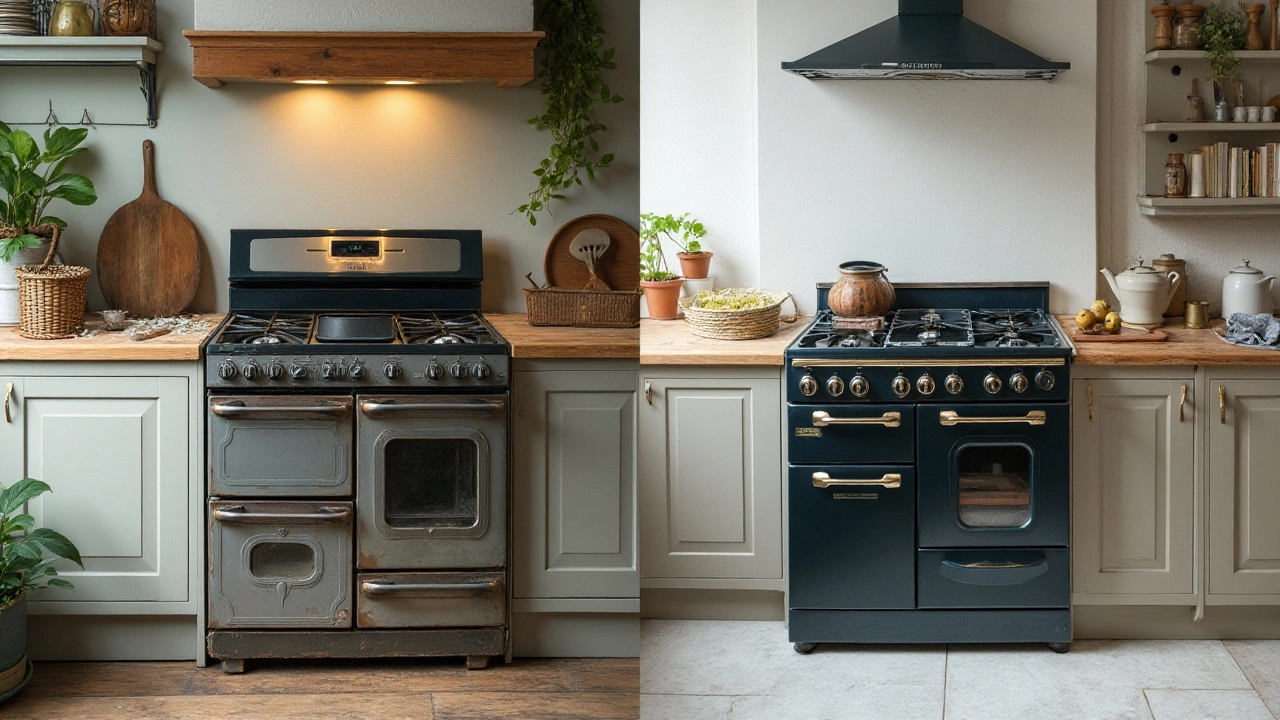
When to Repair vs Replace
Deciding whether to repair or replace your broken oven can be a tricky decision. But making a well-informed choice is crucial to maintaining a budget-friendly and efficient home kitchen. Many factors contribute to this dilemma, and understanding them can help you navigate the journey of making the right choice. The first factor to consider is the age of the appliance. Most ovens are designed to last around 13 to 15 years, so if yours is nearing that age or beyond, replacing might be the more sensible option. However, if your oven is younger, it might just need a quick fix to get it back in top shape.
Then there's the cost of repair itself. A common rule of thumb is the '50% Rule'. If the cost of repairing the oven is more than half the price of a new one, it's typically wiser to invest in a new appliance. Not only does this save potential future expenses as older units are more likely to fail again, but it also gives you a chance to upgrade to newer technology, often yielding energy efficiencies.
According to the Chief Economy Analyst at the Home Appliance Study Group, "Energy-efficient models save homeowners an estimated $450 annually on energy bills. Replacing old units can often pay for themselves in as little as two years."Another consideration is the energy efficiency of your current appliance. Newer ovens tend to be far more energy-efficient than their older counterparts, which can translate to long-term savings on your utility bills. When evaluating energy costs, it helps to calculate the current energy consumption of your oven. If the upgrade results in significantly lower annual energy consumption, this could be a tipping point towards replacement.
It's also essential to consider your personal attachment to the appliance. If it's been custom built or has sentimental value, repairs might be the better choice despite costs. However, in modern kitchens, the aesthetic and functional upgrade of a new oven can sometimes outweigh the familiarity with older ones. Lastly, it can be helpful to assess the frequency and types of repairs. If your oven has been requiring frequent minor repairs, adding up those costs may warrant purchasing a new one rather than continuing an expensive maintenance cycle.
In sum, weighing these factors can guide you in the decision-making process. By prioritizing your needs and considering both short and long-term costs—financial, functional, and environmental—you can reach a well-reasoned decision on whether to repair or replace your trusty kitchen workhorse.

Tips to Save Money on Oven Repairs
Saving money on oven repairs might seem like a daunting task, but with the right strategies, you can keep those expenses in check. First, familiarize yourself with your oven model and its common quirks. Many issues arise from simple problems such as a loose knob or a basic electrical fault rather than a fundamental flaw in the appliance. Regularly consulting your oven's manual can provide vital maintenance tips specific to its design. Modern appliances often come equipped with diagnostic modes that help identify issues before they become severe. Exploring these features not only enhances your repair skills but also extends the life of your appliance, avoiding costly replacements.
Another effective way to cut expenses is by learning how to perform basic, safe maintenance tasks yourself. For example, regularly cleaning your oven's interior and components can prevent many oven repair issues associated with build-up and wear. Use non-abrasive cleaners and soft cloths to keep the surfaces and elements residue-free. Seek online tutorials and guides that can offer step-by-step instructions for minor repairs and maintenance. However, always ensure your oven is unplugged before attempting any DIY repairs to prevent accidental shocks or injuries. Many homeowners find that keeping a simple toolkit tailored for appliance repairs pays off over time.
For more significant issues, the dilemma often involves deciding whether to seek professional help or attempt a fix yourself. Getting more than one quote for a professional repair can provide insight into average repair costs and sometimes persuade technicians to offer competitive pricing. Don't hesitate to ask questions about the problem; understanding the repair process can prevent unnecessary charges. As a helpful tip, maintain a good relationship with a local repair service; loyal customers frequently enjoy discounts or prioritized service. You might even consult with fellow homeowners or online forums for recommendations on trusted and affordable appliance maintenance professionals.
Explore Warranties and Replacement Parts
Before spending a dime on repairs, check if your oven is still under warranty. Oven warranties often cover a substantial portion of repair costs, and understanding the terms of these agreements can significantly reduce expenses. If your warranty has expired, look for manufacturer-certified parts. Buying generic parts might seem cheaper initially, but they can sometimes cause further issues down the line. Also, consider resale markets for secondhand parts that are verified to be in sound working condition. These parts can be a cost-effective solution to your more pressing repair needs.In rare instances, you might encounter advice from repair professionals that suggests replacement as a more viable option than repair. Turning to a reliable source such as Consumer Reports can shed light on whether an older model's repairs might exceed its value. As quoted from Consumer Reports, “Older appliances that require frequent repairs might not be worth the expense compared to investing in energy-efficient, modern models.” By weighing your options and researching replacements thoroughly, you can ensure you are getting the best value for your money and decide confidently.
Finally, a little foresight can pay off significantly. Taking the time to regularly inspect your oven, clean it, and address small issues before they turn into big problems will often keep you ahead of costly repairs and unnecessary expenses. Remember, a stitch in time saves nine, and keeping your kitchen appliances in top shape doesn't have to be an expensive ordeal.



